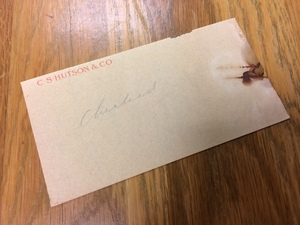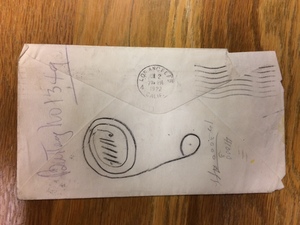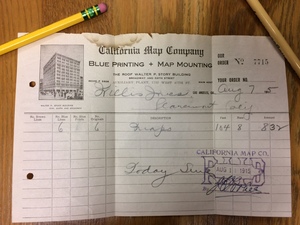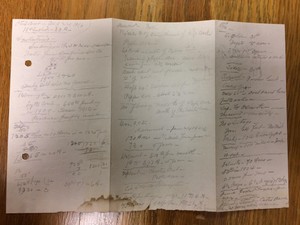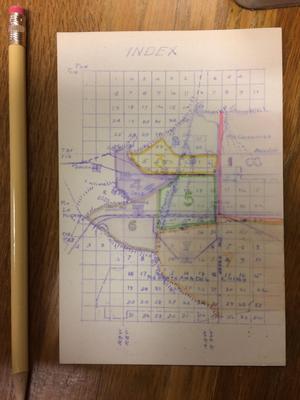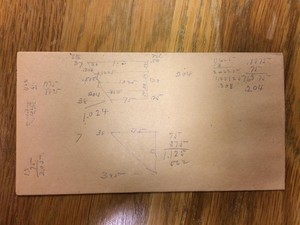Hiya, folks! This week in the exciting world of Willis Jones field notebook scanning: A photograph! Of a person!
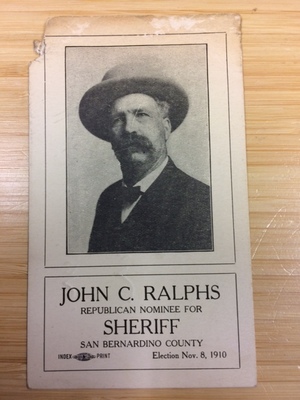
This particular human is one John C. Ralphs (1852-1931), who as the card notes ran for San Bernardino County sheriff in 1910. I take it he won, because according to a San Bernardino County Sun article about local civic leaders, Ralphs served as sheriff from 1903 to 1915. The article also describes Ralphs as a “big, powerful man, standing well over six feet tall in his boots, weighing better than 200 pounds and sporting a big handlebar mustache.” It was, as the photograph clearly attests, a mustache worthy of note.
My five minutes of Internet research also found that Ralphs instituted a policy known as the “hobo rock pile.” According to the Inland Valley Daily Bulletin, “all misdemeanor prisoners — mostly itinerant visitors to the county — were assigned to work on the county’s rock pile, making little rocks out of big ones.” And make little rocks they did, because eventually the county ran out of rocks for prisoners to smash (what’d the county do with all those rocks?). Chairman J.B. Glover was then authorized by the Board of Supervisors “to purchase 100 tons of rocks to keep the county’s prisoners from being idle.”
So, okay. I’m not sure what Jones made of any of this, or why Ralphs’s election card was in his notebook. Maybe Jones used the photo as an impromptu bookmark. Maybe he had an interest in tiny rocks. Truth be told, I have a difficult time reading Jones’s handwriting, so for all I know these notebooks could be filled with all sorts of commentary about small rocks and the larger rocks whence they came. I’ll close this meandering post with one more loose end: the backside of the photograph.
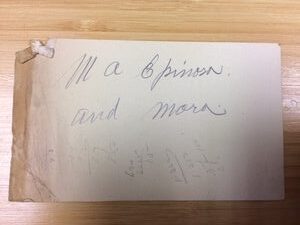
Not sure what it says, dunno what it means.
Citations
Joe Blackstock, “Weird news has been going on for years in Inland Valley,” Inland Valley Daily Bulletin. January 02, 2017. https://www.dailybulletin.com/general-news/20170102/weird-news-has-been-going-on-for-years-in-inland-valley
Nick Cataldo, “A great city like San Bernardino needs great leaders.” San Bernardino County Sun. November 11, 2013. https://www.sbsun.com/20131111/a-great-city-like-san-bernardino-needs-great-leaders
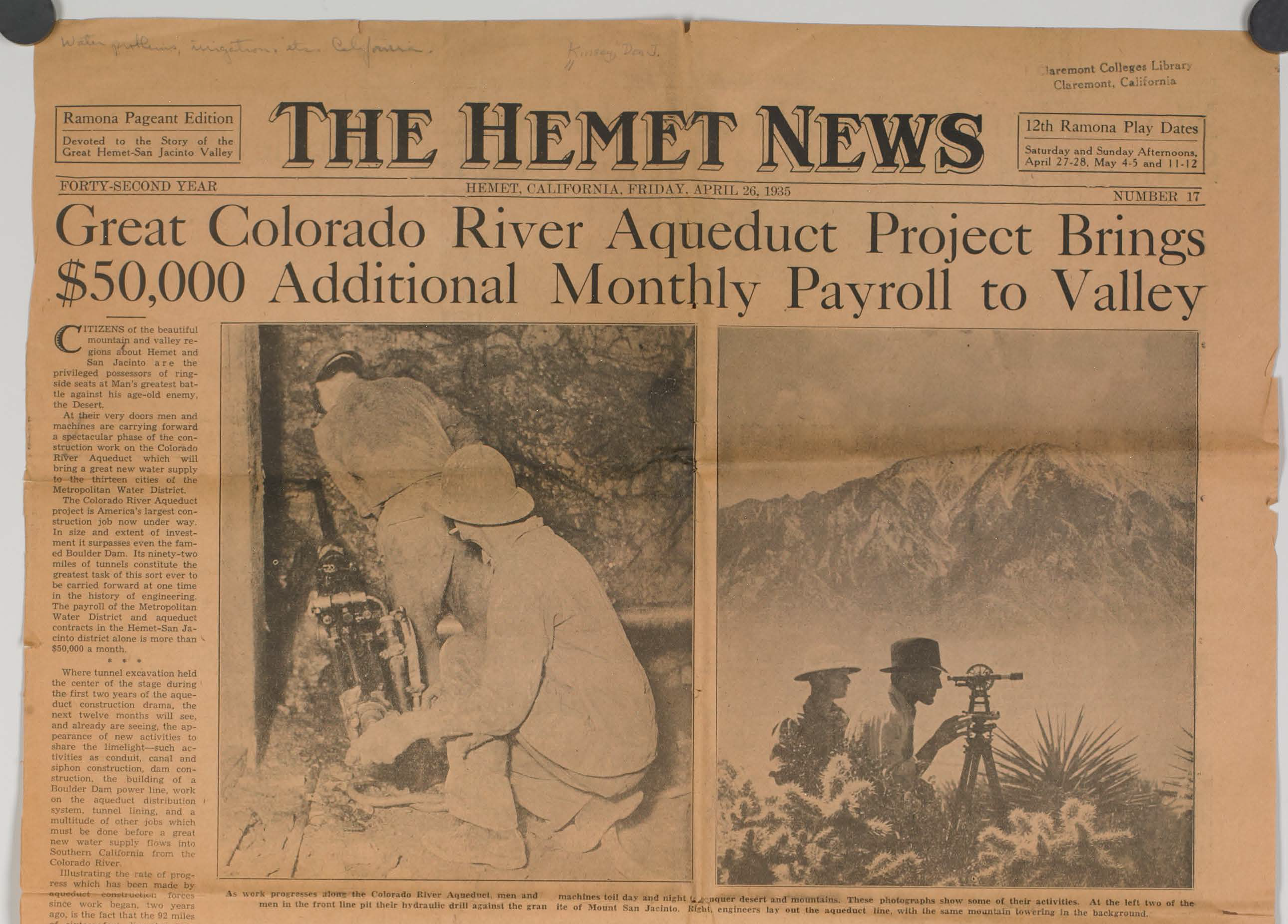

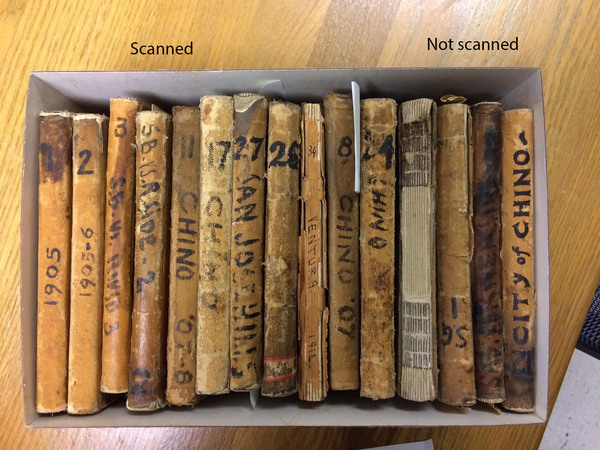

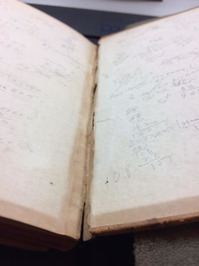
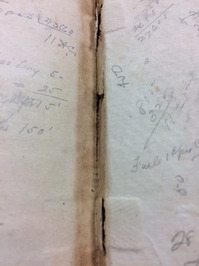
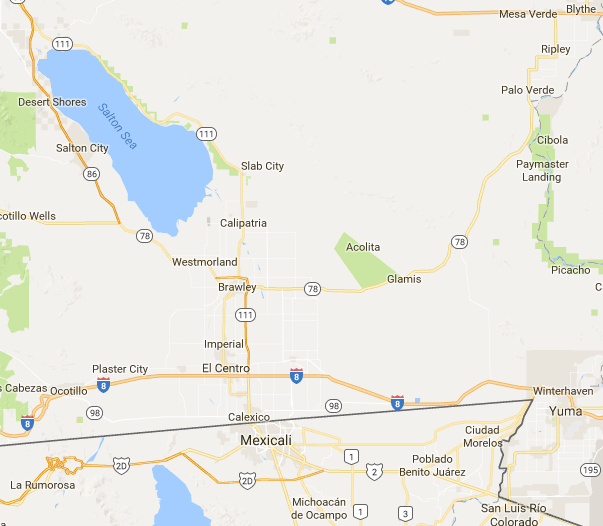 So, as you can see, it’s located on the border between southern California and Mexico. The document I’m about to describe illustrates some of the social, economic, and political power dynamics that took place at the dawn of the twentieth century in this region.
So, as you can see, it’s located on the border between southern California and Mexico. The document I’m about to describe illustrates some of the social, economic, and political power dynamics that took place at the dawn of the twentieth century in this region. 
